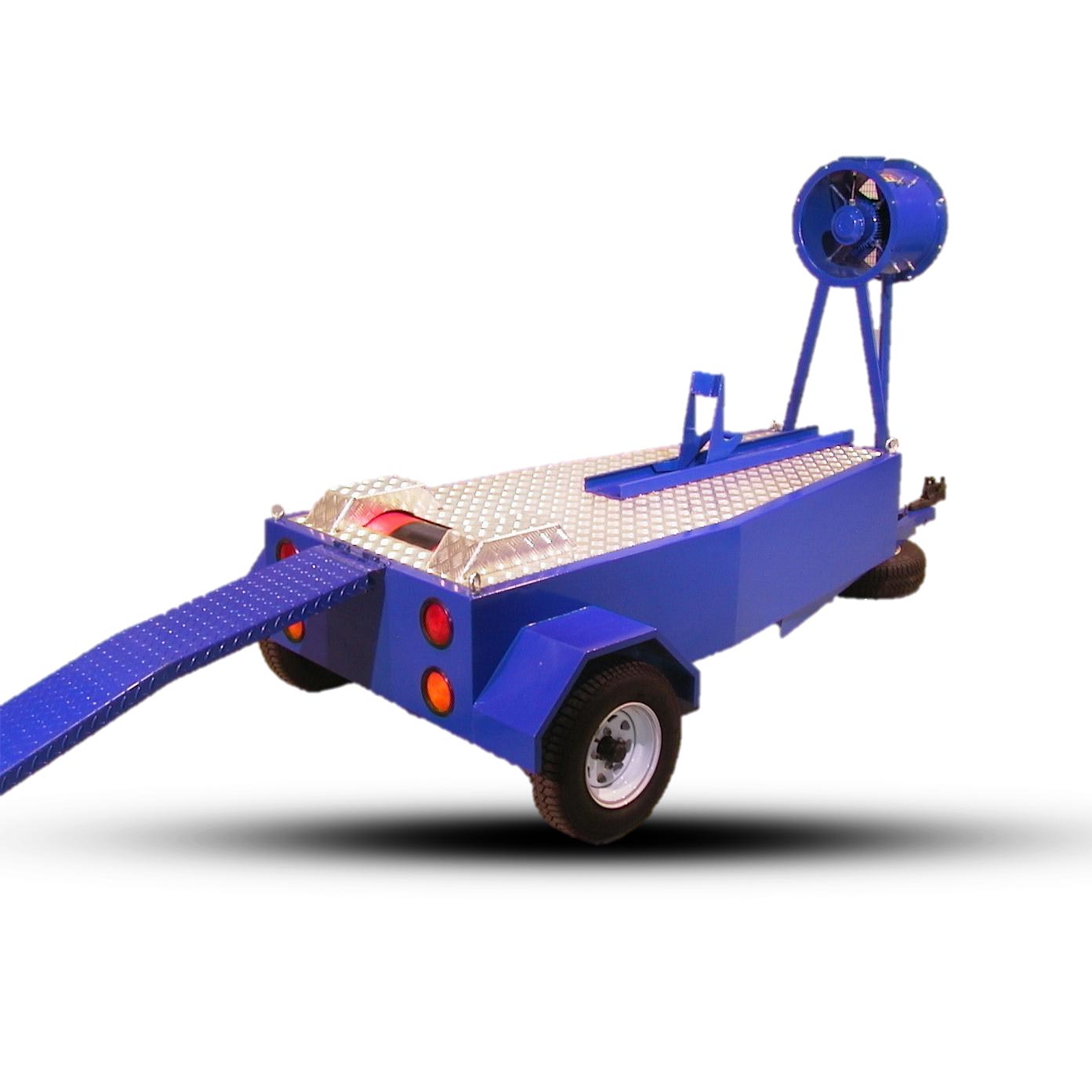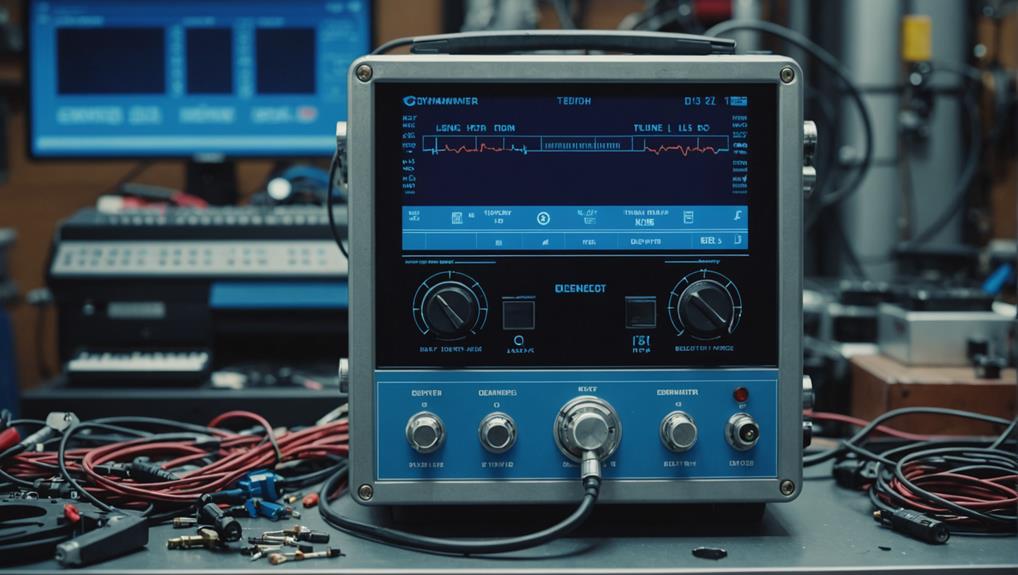
How Dynamometers Enhance Engine Diagnostics and Testing
Necessitating precise measurements, dynamometers unlock the secrets of engine performance, but what else can they reveal about engine diagnostics and testing?
Torque measurement is a complex process that necessitates consideration of dynamic force, acceleration, and strain on the rotating shaft.
Accurate measurement and analysis of torque guarantee reliable data collection and optimal system performance. Direct measurement techniques offer higher measurement accuracy and the possibility to measure higher rotational speeds, whereas indirect methods involve estimating torque using motor efficiency and shaft speed.
Appreciation of the significance of torque measurement and selection of the right technique is vital in diverse industries, including aerospace and automotive, where safety and reliability are paramount.
Grasping the fundamentals of torque and power measurement enables engineers to gain new insights into system performance and optimisation.
In the domain of mechanical systems, torque plays a vital role as a twisting force that causes an object to spin around a rotational axis.
Torque, a vector force, is measured in units of newton metres (N·m) or foot-pounds (ft·lbs) and is directed perpendicular to the plane of rotation. There are two primary types of torque: rotary torque, occurring in rotating objects, and reaction torque, resulting from static force application.
Torque measurement is a complex process that requires consideration of dynamic force, acceleration, and strain on the rotating shaft.
The selection of measurement technique depends on the application's requirements. Comprehending the type of torque to be measured is vital, as it affects the selection of the measurement system.
Inline measurements in rotating applications present a unique challenge, as the sensor must be connected to stationary electronics, often using sliprings or advanced solutions.
Engineers can accurately measure and analyze this critical force, ensuring reliable data collection and optimal system performance, if they grasp the fundamental principles of torque.
As torque plays a pivotal role in mechanical systems, accurately measuring it is crucial to ensure the reliability and efficiency of these systems.
Measuring mechanical torque is essential for designing, commissioning, and troubleshooting machines, as it verifies they meet specifications and operate efficiently. Knowledge of the true mechanical torque of a shaft or rotating member is critical to prevent system damage or failure, particularly in applications where excess torque can cause damage or injury.
Torque measurements are vital for predictive maintenance, as they help identify potential issues before they become major problems, reducing downtime.
In industries such as aerospace and automotive, accurate torque measurement is critical for safety and reliability, as it verifies that critical components can withstand the stresses and loads they will encounter. A reliable torque measurement system, incorporating torque sensors and rotary torque sensors, is essential for optimising system performance, allowing designers and engineers to fine-tune their systems for maximum efficiency and power output.
Measuring torque accurately relies on choosing the right approach, and engineers often face the dilemma of whether to opt for direct or indirect measurement methods.
Direct torque measurement offers many technological advantages, including higher measurement accuracy and the possibility to measure higher rotational speed. This method involves determining the torque signal in the drive train using torque flanges, such as the T12 digital torque transducer or T40B from HBM.
In contrast, indirect torque measurement has relatively large errors and measurement uncertainties, making it less reliable than direct measurement.
Indirect torque measurement involves estimating torque using motor efficiency and shaft speed, which can be calculated in conjunction with a rotational speed measurement. The reaction force measurement method is used for indirect determination of torque, which requires complicated mechanics and is prone to interference effects and errors.
While direct torque measurement provides a more accurate reading, it requires a more complex setup. Conversely, indirect torque measurement is often less accurate but more cost-effective.
The choice between direct and indirect torque measurement depends on the specific application's requirements, including accuracy and complexity.
Rotary torque sensors have a wide range of applications across diverse industries, including automotive, aerospace, and industrial sectors, where precise torque measurement is vital for optimal performance and safety.
The selection of a suitable rotary torque sensor depends on the specific requirements of the application, such as the level of accuracy needed, the environmental conditions, and the connection method.
Numerous industrial applications rely on accurate measurement of rotary torque, which involves dynamic measurement of torque in rotating systems.
Rotary torque sensors, designed to measure torque in high-speed applications, are commonly used in driveshafts, turbines, and generators. The strain gauge, bonded to the rotating shaft, measures deformation caused by torque, producing a voltage proportional to the applied torque.
Rotary torque sensors can measure torque in both clockwise and counterclockwise directions and are often used in motor testing, dynamometer applications, and predictive maintenance.
Rotary torque measurement systems utilise IR transducers or FM transmitters to transmit digital output signals from the rotating sensor to stationary receiver diodes without wear or drag.
Slip rings are also used to connect rotary torque sensors to stationary electronics, but they have limited lifetimes and can be noisy at high speeds. A power source, typically a 9V battery, is required to operate the circuit that provides excitation voltage to the strain gauge bridge and digitises the output signal.
Accurate measurement of rotational torque, speed, and angle enables precise control and optimisation of rotating machinery in diverse industrial applications.
In industrial settings, precise control and optimisation of rotating machinery are vital, making accuracy paramount.
When selecting a torque sensor, multiple factors must be considered to guarantee accurate and reliable measurements. Rotary torque sensors, which measure rotational torque, are used in applications such as driveshafts, turbines, and generators.
The selection of a rotary torque sensor depends on factors including maximum operating torque, extraneous loads, and environmental conditions.
There are two main categories of rotary torque sensors: contact and contactless. Contactless sensors are commonly used in high-speed or high-temperature applications, providing a non-destructive way to measure torque.
Dual-range rotary torque sensors can measure both high and low torque ranges, making them suitable for applications where torque levels vary greatly.
Signal conditioning is often required to match the output to the application's requirements.
Understanding the type of torque to be measured, including dynamic and static torques, is vital for selecting the proper rotary torque sensor and measurement system.
The connection method chosen affects the overall sensor package, with slip rings being an economical solution, and more advanced solutions available for demanding applications.
Reaction torque sensors are employed in diverse applications that require precise torque measurement, such as in torque wrenches and screwdrivers, to certify accurate control over the amount of torque applied to an object.
In these applications, reaction torque sensors play a critical role in maintaining precise torque control, which is vital in industries like aerospace and automotive where high accuracy and reliability are paramount.
Torque measurement plays a crucial role in guaranteeing the proper functioning of machines, devices, and tools across diverse industries.
Torque sensors are widely used in various applications, including torque wrenches, electric motors, robotic arms, and surgical instruments, to measure static and dynamic torque.
In the automotive industry, reaction torque sensors optimise vehicle performance and efficiency by measuring the torque output of electric motors.
Industrial settings rely on them to measure the torque required to perform specific tasks, ensuring accurate speed measurement and precise control.
Torque sensors in medical devices guarantee precise control and prevent damage to tissues during surgical procedures.
Calibration laboratories, too, rely on torque measurement systems to calibrate torque-measuring devices, ensuring accurate measurements across industries.
The right torque measurement system, selected considering factors such as connection methods and sensor packages, enables industries to optimise their operations and guarantee precise control over their machines and devices.
Measuring torque with precision is essential in diverse industries, where even slight deviations can have significant consequences.
In applications where precise torque control is paramount, reaction torque sensors provide accurate measurements to prevent excess torque, ensuring the safety and efficiency of machines. These sensors measure static torque, which occurs when a static force is applied to an object, and are commonly used in handheld tools, robotic assembly, and test and measurement applications.
Reaction torque sensors play a pivotal role in maintaining optimal performance in industries such as automotive, aerospace, and manufacturing.
They help detect potential system failures in predictive maintenance by measuring the torque exerted on a shaft or rotating member, enabling proactive maintenance and reducing downtime. When paired with rotary torque sensors, reaction torque sensors provide an in-depth understanding of torque in a system, allowing for precise control and optimisation of machine performance.
The digital torque signal from the sensor can be transmitted via infrared light or FM transmitters, ensuring accurate and reliable measurement in demanding applications.
Incorporating reaction torque sensors enables industries to achieve precise torque control, ensuring optimal performance, safety, and efficiency.
Within the domain of rotational dynamics, torsional vibration analysis plays a vital role in evaluating the oscillations in rotational speed that occur within a single rotation cycle.
This type of vibration is typically induced by rough driving torque or fluctuating load, and can be a source of failure on rotating shafts. Measuring torsional vibration requires special considerations and techniques, as it involves dynamic torque measurement and understanding the relationship between dynamic force and acceleration.
To accurately measure torsional vibration, rotary torque sensors or reaction torque sensors can be utilised.
These sensors measure dynamic torque, which is then used to calculate torsional vibration. The sensor measures rotational speed, and the data is transmitted via infrared light or FM transmitters to a stationary receiver or a remote data acquisition system.
The digital output signal is then used to calculate multiple parameters, including rotational angle, rotational velocity, torsional angle, and torsional velocity, in RPM units.
Understanding the type of torque to be measured, including torsional vibration, allows the proper torque measurement system to be chosen, ensuring reliable data collection.
Torque measurement methods can be broadly categorized into direct measurement, indirect calculation, and diverse torque sensor technologies.
Direct measurement methods involve using sensors to measure the true mechanical torque of a shaft or rotating member, offering higher accuracy and the possibility to measure higher rotational speeds.
This section will delve into these methods, including their underlying principles, advantages, and limitations, to provide an in-depth grasp of torque measurement.
Direct measurement methods, involving the detection of torque signals in the drive train, offer distinct advantages over indirect approaches.
This direct method of torque measurement provides higher measurement accuracy and the possibility to measure higher rotational speeds.
Torque flanges, such as the T12 digital torque transducer or T40B from HBM, enable contactless measurement and are characterised by an extremely short design, making it easy to integrate high-quality torque transducers into test benches.
Rotary torque sensors, like those used in driveshafts, turbines, and generators, measure dynamic torque and are used in applications where the torque is measured on a rotating shaft.
These sensors can be configured with or without bearings, offering a true maintenance-free, no-wear, no-drag sensor solution.
Torque sensors can be remotely connected to a data acquisition system using FM transmitters, converting the sensor's signal to digital form and transmitting it to an FM receiver.
Direct torque measurement methods provide many technological advantages, including higher measurement accuracy, higher rotational speeds, and the possibility to measure high-frequency torque oscillations.
While direct measurement methods offer distinct advantages, indirect calculation methods provide an alternative approach to determining torque, particularly in situations where direct measurement is not feasible or practical.
Indirect torque measurement involves calculating torque using motor efficiency and shaft speed, which can be less accurate than direct measurement methods. However, modern test and measurement equipment make it easy to determine electric power and rotational speed in electric machines, enabling indirect calculation of torque measurement.
In certain measurement applications, indirect calculation methods are preferred due to their ability to handle high-speed or high-torque applications where direct measurement is not possible.
There are several approaches to indirect torque measurement, including reaction force measurement method, which requires complicated mechanics and can be prone to errors, calculating torque in conjunction with a rotational speed measurement using modern test and measurement equipment, and using circuitry on the rotating sensor to provide excitation voltage to the strain gage bridge and digitize the output signal.
Understanding the relationship between dynamic force and acceleration is vital for reliable data collection in indirect calculation methods.
Signal processing techniques can be employed to reduce torque fluctuations and improve measurement accuracy.
Twelve distinct types of torque sensors exist, each leveraging a unique physical principle to measure rotational force.
These sensors can be broadly categorised into two main types: rotary torque sensors, which measure rotational torque, and reaction torque sensors, which measure stationary torque.
Rotary torque sensors, such as those utilising optical or magneto-elastic principles, provide a contactless way to measure torque and are often used in applications where high-speed rotation is involved.
Reaction torque sensors, like strain gauge-based sensors, offer high precision and reliability for contactless measurement.
Strain gauge-based reaction torque sensors, such as the T12 digital torque transducer or T40B from HBM, are commonly used for their high precision and reliability.
Digital torque sensors, such as force transducers, provide precise torque measurement through digitising the output signal.
Comprehending the type of torque to be measured and the available torque sensors is vital for accurate measurement, as different sensors offer varying levels of precision, cost, and complexity.
Limitations inherent in the indirect method of torque and power measurement can compromise accuracy and reliability.
This method, which involves calculating torque based on motor current and voltage, is susceptible to errors due to diverse factors.
Inaccurate motor constants, such as efficiency, power factor, and torque constant, may not be accurately known or may vary with operating conditions, leading to errors in torque calculation.
Slip ring and brush losses, resulting from the use of slip rings and brushes, can affect the accuracy of torque measurement, particularly at high speeds.
The indirect method may not accurately account for the torsional angle and static torque, which can lead to errors in measuring the driving torque, capacity torque, and maximum operating torque.
These limitations can result in inaccurate torque and power measurements, which can have significant implications for motor performance, efficiency, and reliability.
Understanding these drawbacks is vital to guarantee accurate and reliable torque and power measurement in diverse applications.
In contrast to the indirect method, direct torque measurement offers a more precise and reliable approach to determining torque and power.
This method provides higher measurement accuracy and can measure higher rotational speeds, making it ideal for applications where precision is critical. Rotary torque sensors used in direct measurement can withstand high rotational speeds and temperatures, making them suitable for demanding industrial applications.
Direct torque measurement eliminates the need for complicated mechanics and temperature compensation, reducing errors and increasing total measurement reliability.
Furthermore, direct measurement techniques, such as those using IR transducers, offer a maintenance-free and wear-free solution for measuring torque, eliminating the need for slip rings or other mechanical connections. FM transmitters in direct measurement techniques enable remote connection to a data acquisition system, allowing real-time monitoring and data collection.
Transmitting the signal digitally reduces signal degradation and noise, ensuring a more reliable and accurate measurement of torque. This makes direct torque measurement an attractive option for test benches and other applications where high-accuracy measurements are vital.
When measuring torque, selecting the right torque sensor is crucial for obtaining accurate and reliable results.
The type of torque sensor required depends on the application, and it is imperative to define the type of torque to be measured (reaction, rotary, or dual force) and consider the environment in which the sensor will operate.
To guarantee accurate measurements, consider the following key factors when selecting a torque sensor:
Additionally, consider the mounting characteristics, connection methods, and calibration requirements to guarantee seamless integration with your measurement system.
Understanding the type of torque to be measured and the available torque sensors enables you to select the right torque sensor for your particular application, ensuring reliable and accurate results.
Torque and Power Measurement Techniques Explained
Understanding Torque Fundamentals
Torque is a rotational force that causes an object to rotate. It is a crucial parameter in mechanical systems, influencing performance, efficiency, and safety. At Hyper Power, we understand the importance of precise torque measurement in multiple industries, including automotive, aerospace, and industrial manufacturing.
Importance of Torque Measurement
Torque measurement is vital in guaranteeing product quality, optimising system performance, and preventing mechanical failures. It helps engineers design and test machines, gearboxes, and powertrains, as well as diagnose issues in existing systems. If you have any questions about our Custom Dyno Solutions, Installation and Setup, Training and Certification, Technical Support and Maintenance, Software Updates and Upgrades, Diagnostics and Performance Analysis, Rental Services, Dynamometer Testing Services, or Accessories and Parts, please do not hesitate to contact us.
Direct Vs Indirect Measurement
Torque measurement techniques can be classified into direct and indirect methods. Direct methods involve measuring torque using sensors, while indirect methods estimate torque based on other parameters, such as speed and power.
Rotary Torque Sensor Applications
Rotary torque sensors are used in applications where rotational motion is involved, such as in electric motors, gearboxes, and pumps. They provide accurate and reliable torque measurements, enabling real-time monitoring and control.
Reaction Torque Sensor Uses
Reaction torque sensors measure the torque exerted on a stationary object, such as a gearbox or a motor housing. They are commonly used in applications where the reaction torque needs to be measured, such as in robotics and industrial automation.
Torque Measurement Methods Explained
Several torque measurement methods exist, including strain gauge, piezoelectric, and optical sensors. Each method has its advantages and limitations, and the choice of method depends on the specific application and requirements.
Indirect Method Drawbacks
Indirect torque measurement methods have limitations, including accuracy issues and the need for complex calculations. They can also be affected by external factors, such as temperature and vibration.
Direct Measurement Advantages
Direct torque measurement methods offer several benefits, including high accuracy, real-time data, and ease of use. They are also less prone to errors and can provide more detailed information about the system.
Selecting the Right Torque Sensor
Selecting the right torque sensor depends on multiple factors, including the application, measurement range, and environmental conditions. At Hyper Power, we can help you select the right torque sensor for your specific needs. Please contact us for more information on our Custom Dyno Solutions and Technical Support and Maintenance.
In summary, torque measurement is a fundamental aspect of mechanical system design and testing. Direct measurement methods offer several benefits over indirect methods, and selecting the right torque sensor is key for accurate and reliable measurements. Precise torque measurement enables engineers to optimise system performance, prevent mechanical failures, and guarantee product quality. If you have any questions or need assistance, please contact Hyper Power for our expertise in Dynamometer Testing Services and Accessories and Parts.

Necessitating precise measurements, dynamometers unlock the secrets of engine performance, but what else can they reveal about engine diagnostics and testing?
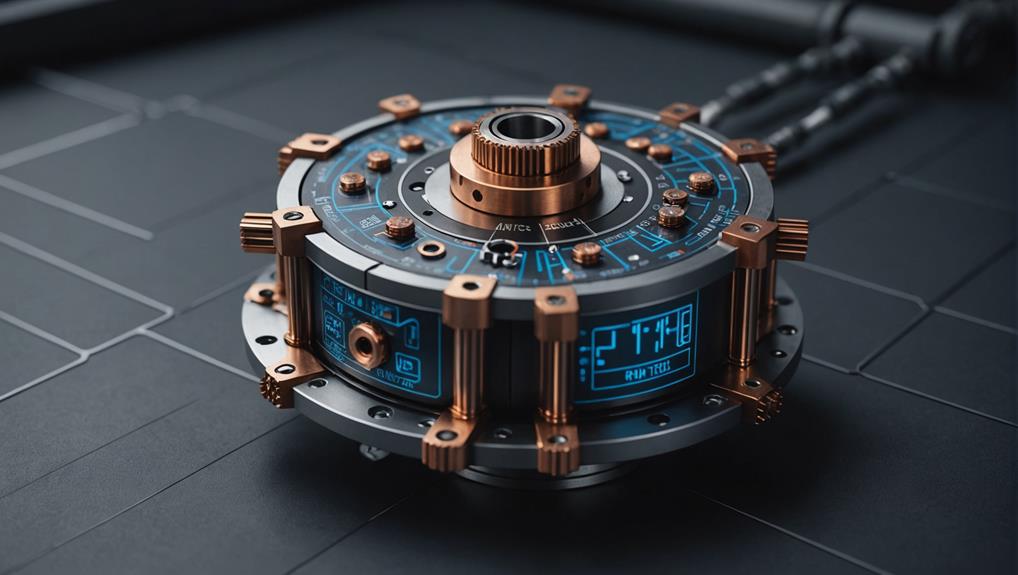
Navigating the complexities of torque measurement requires a deep understanding of the underlying principles and mechanisms to ensure accurate results.

Precise control and optimization of engine performance await, but only for those who unlock the secrets of dynamometer-driven data analysis.
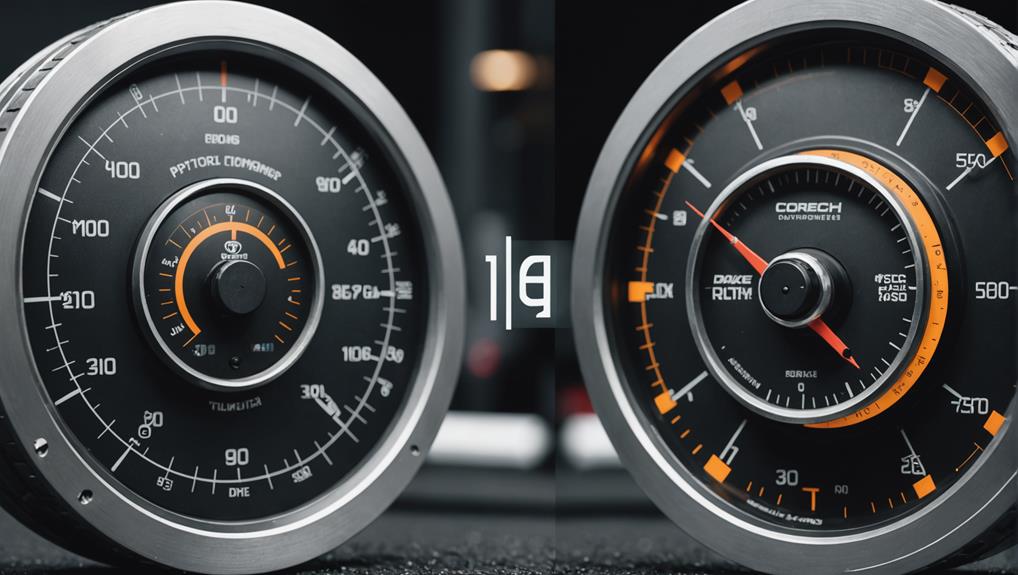
Gaining insight into the differences between inertia and brake dynamometers is crucial for ensuring accurate testing results in various industries.
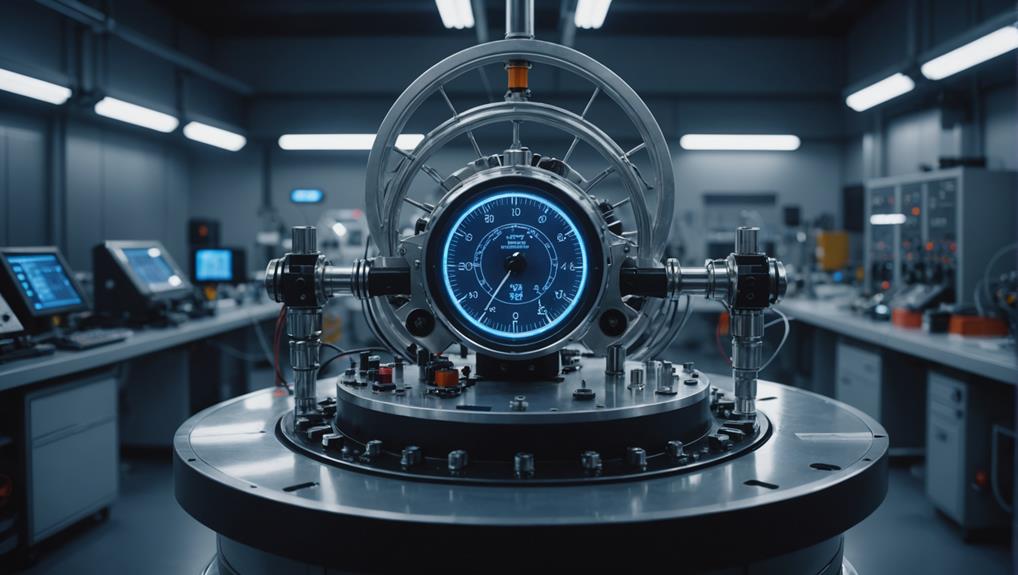
Tapping into the precise measurement capabilities of dynamometers, uncover the secrets to optimizing fuel efficiency and slashing emissions in the automotive industry.

Witness the importance of rigorous safety protocols and best practices in dynamometer testing to avoid catastrophic failures and ensure accurate results.

Harnessing the nuances of precision measurement is crucial to avoiding costly errors in dynamometer testing, but what are the key factors to consider?

Witness the transformative power of dynamometers in unlocking your vehicle’s hidden performance potential, but only if you know how to harness their precision.

